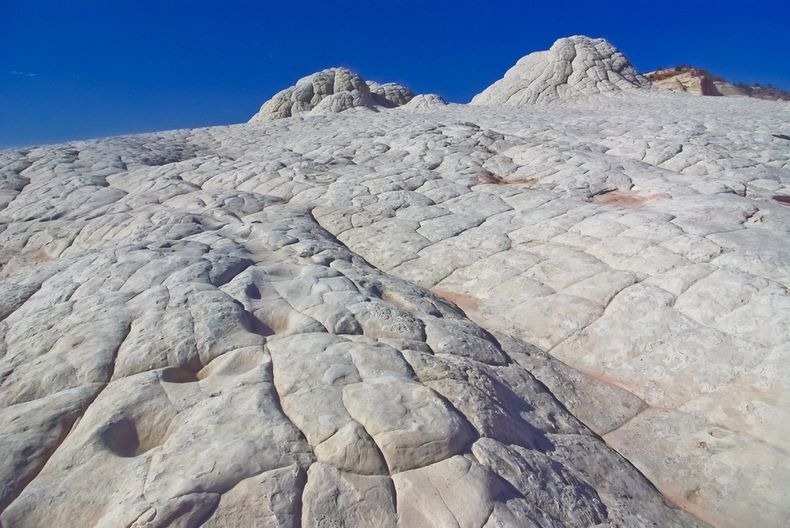In some spots the stone layers are completely twisted, just like an enormous marble cake.
The extraordinary geology at White Pocket is not easily explained.
The sand mass eventually filled a large pond or oasis.
This large sand mass is the featureless bleached-white sandstone or “cauliflower rock” seen today.
Marc has identified at least 25 of these features supporting his theory.
The fine laminae and cross-beds beneath the slide mass are remarkably well-preserved.
This may indicate all of the sand involved was buried under a fairly thick column of additional sediment.
In other words, the slide plane may have been several 100 feet below the surface.
This overburden pressure would have allowed the plastic-like contortions but still keep things somewhat in order.
ThenNational Geographicran a story on the Vermilion Cliffs National Monument, which included some excellent photos of White Pocket.
Since the magazines release there has been a surge of activity at White Pocket.
Today, White Pocket is in the bucket list of every hiker and outdoor enthusiast.
Photo credit
Sources:Steffen Synnatschke,Cedar and SandviaAll-that-is-interesting














